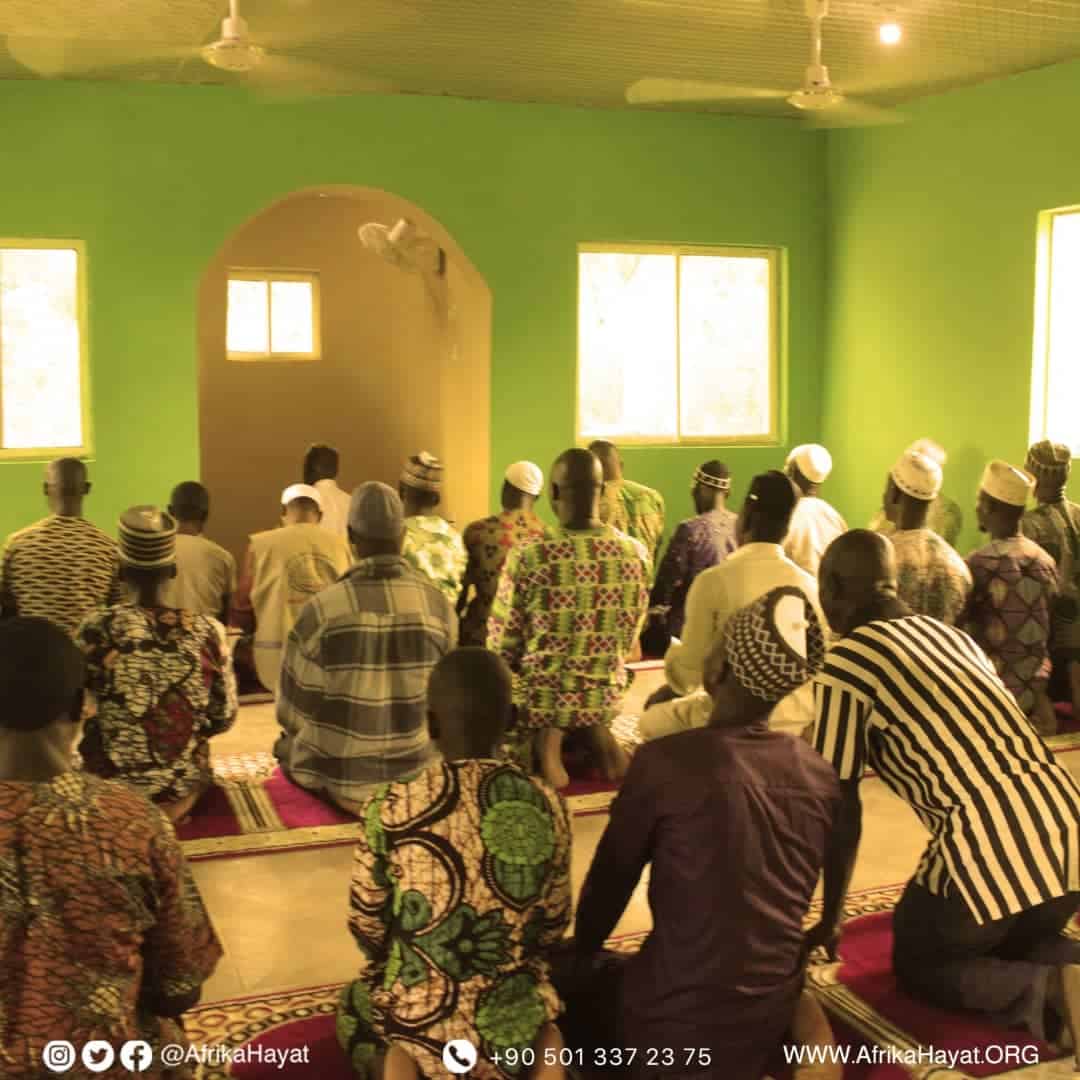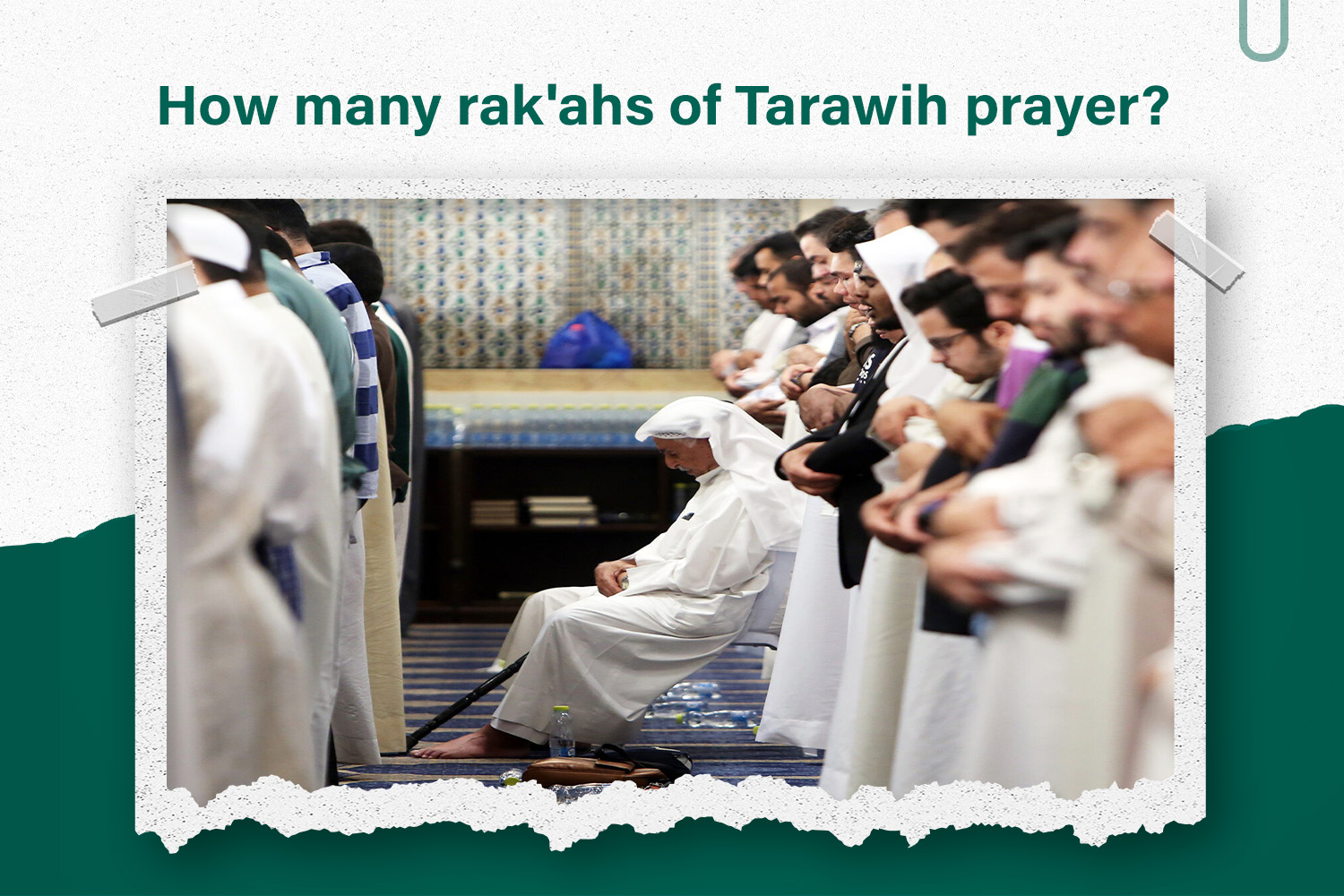What is Tarawih prayer and its significance
Tarawih prayer is a Sunni prayer that is held in the month of Ramadan, after the Isha prayer. It consists of several Rak’ahs that can be increased, depending on the custom and tradition in different countries. The importance of Tarawih prayer comes from the fact that it is an opportunity for Muslims to read and hear the Holy Quran collectively, which strengthens communication with Allah and sheds light on the soul and body.
Introduction to Tarawih prayer
Taraweeh prayer is a Sunni prayer performed by the Prophet Muhammad (peace and blessings of Allaah be upon him) in the month of Ramadan. This prayer is held after the Isha prayer, and is an opportunity to read the Quran and meditate on its verses collectively. Tarawih prayer promotes spirituality and contact with God, it also clears the hearts and gives Man peace and tranquility in his heart. Therefore, performing this prayer is considered one of the most important acts of worship in the holy month of Ramadan.
The importance of performing Tarawih prayer
Taraweeh prayer is one of the important devotions in the month of Ramadan, as it contributes to strengthening spirituality and connection with Allah. This prayer is held after the Isha prayer in an atmosphere full of reverence and contemplation of the verses of the Holy Quran. The worshipers also feel peace and tranquility in their hearts, and prayer purifies their hearts and minds. Therefore, performing Taraweeh prayers is considered necessary to achieve an optimal Islamic lifestyle in the month of Ramadan.

How many Rak’ahs of Tarawih prayer
Taraweeh prayer consists of a varying number of RAK’ahs. According to different Fiqh doctrines, Taraweeh prayer can be composed of 8 Rak’ahs, 20 Rak’ahs, or 36 Rak’ahs. Usually, Rak’ahs are divided into two parts, where in each part a certain number of RAK’ahs are prayed, and the worshipers regain their strength with praise and paper.
How many Rak’ahs are prayed in the Tarawih prayer
The number of RAK’ahs of Taraweeh prayer varies between different Fiqh doctrines. In the Shafi’i and Hanbali madhhabs, 20 Rak’ahs are prayed in the Taraweeh prayer, while in the Hanafi madhhab 8 or 12 Rak’ahs are prayed, and in the Maliki madhhab 36 Rak’ahs are prayed. This shows the diversity in the number of RAK’ahs of Taraweeh according to the Fiqh doctrine followed by the worshipers.
The number of familiar Rak’ahs in Taraweeh prayer
The number of familiar Rak’ahs in Taraweeh prayer varies according to the Fiqh doctrine followed by the worshipers. In the Shafi’i and Hanbali madhhabs, they pray 20 Rak’ahs, while in the Hanafi madhhab they pray 8 or 12 Rak’ahs. In the Maliki school, they pray 36 Rak’ahs. These numbers vary according to different sects, and worshippers can choose the duration of Taraweeh prayers that suit their ability and desires.

How to perform Taraweeh prayer
The Taraweeh prayer is performed by doing the ten lowest Rak’ahs,where the worshipers divide it into equal parts, praying two Rak’ahs in each prostration. The worshipers begin by reading from the Holy Quran, then they kneel, prostrate, and finally receive in the last sitting. Worshipers should make sure to perform the Sunni obligatory acts and read the Surah with good recitation and concentration during prayer.
Etiquette and rules of Tarawih prayer
Worshipers should follow certain etiquette and rules while performing Taraweeh prayers. The worshiper should maintain purity, observe the completion of Tarawih prayers with the imam, and listen devoutly to the recitation of the Holy Quran. Worshipers should also observe prostration and kneel properly, taking short breaks between each two Rak’ahs.
How to divide Rak’ahs in Tarawih prayer
Rak’ahs of Taraweeh prayer are divided into groups, usually consisting of two or four Rak’ahs. After each group, the worshipers rest for a short time before starting the next one. This system lasts until the end of the specified number of RAK’ahs for Taraweeh prayer, which is usually between 8 and 20 Rak’ahs, depending on the usual custom in mosques.
The benefits of Tarawih prayer
Tarawih prayer carries great benefits. They strengthen spirituality and connection with God, contribute to the strengthening of self-discipline and self-control. It also serves to strengthen social relations and interdependence between Muslims, as they gather in the mosque to perform this special prayer. Tarawih prayer offers an opportunity for meditation and prayer, which helps to relieve stress, increase tranquility and inner peace of the individual.
Religious and health benefits of Tarawih prayer
Tarawih prayer is an important religious occasion in Islam, where many spiritual and religious benefits are offered. In addition, this prayer also contributes to improving one’s health. They activate the body, move muscles and increase their elasticity, thereby enhancing physical fitness. They also strengthen the immune system and improve blood circulation, which contributes to maintaining good health. Therefore, Tarawih prayer has multiple benefits, both religious and health, that make it an indispensable worship in the month of Ramadan.
The effect of Tarawih prayer on the soul and body
The effect of Tarawih prayer on the soul and body is significantly positive. This prayer gives the soul peace and harmony with God, which enhances spiritual stability. In addition, Taraweeh prayer movements help to strengthen muscles and enhance flexibility, thereby improving physical fitness and strengthening the immune system.
Directions for performing Taraweeh prayers
It is advisable to follow some directions to perform Taraweeh prayers correctly. One of the most important of these guidelines is to adhere to the etiquette and Sharia provisions related to prayer, such as intention and purification before starting, and reciting the Holy Quran thoughtfully and dutifully. It is also preferable to divide Rak’ahs into small groups and add tasbeeh and dhikr during breaks.

Tips and directions for performing Taraweeh prayers
Tips and directions for performing Taraweeh prayers include adherence to prayer etiquette, such as cleansing and reciting the Quran with reverence and forethought. It is preferable to divide Rak’ahs into small groups and add tasbeeh and dhikr in breaks. It is also advisable to focus on the application of the confirmed Sunnah in the Tarawih prayer, such as reading Surah Al-Fatiha and a long surah in each Rak’ah.
The best time to perform Taraweeh prayers
She advises to perform the Tarawih prayer at the right time, which is after the Isha prayer and until the Fajr prayer. At this time the body is relaxed and the mind is more attentive and busy with worship. It also provides an opportunity for Muslims to recite the Quran and meditate on its verses with serenity and reverence.
Conclusion and prayer
At the end of the Tarawih prayer, the worshipper performs the Salaam and moves away from the mosque with reverence and hopes for the favor of this prayer. The prayer at this time is especially considered responsive, the worshiper asks God to accept his prayers and forgive his sins. The conclusion and supplication are a beautiful conclusion to the Tarawih prayer, which refreshes the soul and elevates the worshiper in the eyes of Allah.
Conclusion and reflection on the virtues of Tarawih prayer
After the Tarawih prayer is over, the worshiper should reflect on the virtue and significance of this prayer. Tarawih prayer is an opportunity to get closer to God and listen to his words. By contemplating the virtue of this prayer, a Muslim feels gratitude, satisfaction, enters a state of tranquility and tranquility. Reminding ourselves thanks to the Tarawih prayer makes it more holy and influential in our lives.
Supplication with the seal of Tarawih prayer
After the end of the Tarawih prayer, Muslims are recommended to conclude the prayer with Dua. The worshiper can pray for forgiveness and mercy from God, and wish good to himself, his loved ones and all believers. A Muslim can also use this opportunity to ask for constancy in obedience and closeness to Allah in the coming days. Praying with the seal of the Tarawih prayer is an important moment to direct supplications to God and ask for forgiveness.
You can visit the ahad Association website to find out more about the projects it offers
Related articles:
The importance and bounty of the month of Ramadan
Join us in our message by donating




